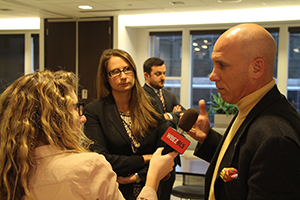
After more than a year of deliberating over various public-private investment schemes, the newly-minted Chicago Infrastructure Trust has unanimously passed a roughly $30-million project to retrofit 75 city buildings using a novel financial instrument that pays for the work through the job's long-term energy savings.
"It's pretty clever," said Claire Tramm, the trust's energy program director, just minutes after the vote. "We are just repurposing money that we would otherwise spend on utility bills."
Called an efficiency or energy service agreement (ESA), the measure, passed on Nov. 12 and pending city council approval, is the first-ever project to come out of the Chicago Infrastructure Trust, launched in 2012. Expected to close by the year-end, the deal is believed to be just the second tax-exempt ESA to exist aside from one in the State of Maryland, officials say.
"We believe that the ESA transaction is an excellent model—not only for this set of projects—but going forward for other projects," said Steve Beitler, the trust's CEO.
Earlier that day, Chicago Mayor Rahm Emanuel, who initially pushed for the city to form an infrastructure trust, told attendees at an Airports Going Green conference that the deal will save taxpayers $2 million per year—money "that used to literally go flying out the window."
The trust has been criticized for taking months to enact a program, but its supporters counter that it is navigating relatively uncharted waters.
The green-retrofit project—which would replace old light fixtures, chillers, furnaces, building envelopes and the like with more energy-efficient equipment—is expected to upgrade nearly 6 million sq ft of public building space, including Chicago's city hall and dozens of libraries, police stations and community centers. Over the life of the project, the retrofits would save 23 million kW of electricity and 515,000 therms of gas.
"It's the equivalent of taking about 4,323 cars off the road on an annual basis," Beitler noted.
By approving the measure, the trust selected Piper Jaffray as the project's placement agent, which would be responsible for obtaining investors to finance a loan whose principal could be as high as $30 million with a term as long as 22 years and an annual interest rate not to exceed 5%. Today, the loan principal is estimated at $27.5 million.
Once the debt is raised, the trust would then oversee payments to contractors during the one-year retrofit work, which is estimated to cost about $25.6 million. The measure called for Schneider Electric Buildings Americas Inc., Noresco LLC and Ameresco Inc. to act as design-build contractors in charge of the retrofits.


Post a comment to this article
Report Abusive Comment